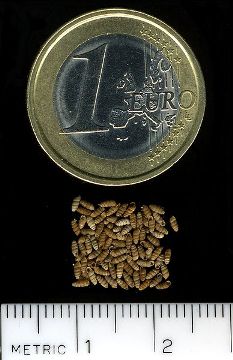Classification
Domain-Eukarya
Members of the domain Eukarya have a true nucleus and membrane bound
organelles.
Kingdom-Animalia
Organisms in this kingdom are all multicellular and depend on the
consumption of other organisms for nutrients. These organisms are separated
from plants because they lack cell walls, allowing most animals to be able
to move.
Phylum-Mollusca
Molluscs are characterized as having head, foot, and visceral mass contained
within the body. Within the phylum, many modifications have been made to the
foot among the different species. Most also have a shell that is secreted by
epidermal tissue, but some have greatly reduced, or lost completely, their
shell.
Class-Gastropoda
The muscular foot in this class is used for movement along a substrate in
nearly all species. All gastropods go through torsion (the rotation of the body so
the anus is above the head), but some groups, such as slugs and
 nudibranchs, reverse the process before maturation.
nudibranchs, reverse the process before maturation.
Order-Stylommatophora
All of the gastropods in this order are air-breathing and have two pairs
of tentacles that cannot be retracted with the anterior pair bearing the
eyes at the tip. There are a few slugs in this group but the majority of
these organisms secrete shells and live on land.
Family-Pupillidae
Family Pupillidae is made up of tiny, air-breathing land snails.
Genus-Vertigo
The latin root Vert means to turn and the term vertigo is associated
with dizziness or a sensation of whirling. Thus, this genus has a
characteristic shell shape involving 5-6 whorls with the last one being
rounded.
Species-nylanderi
This snail is named after Olaf Nylander, who
discovered it in the early 1900's.